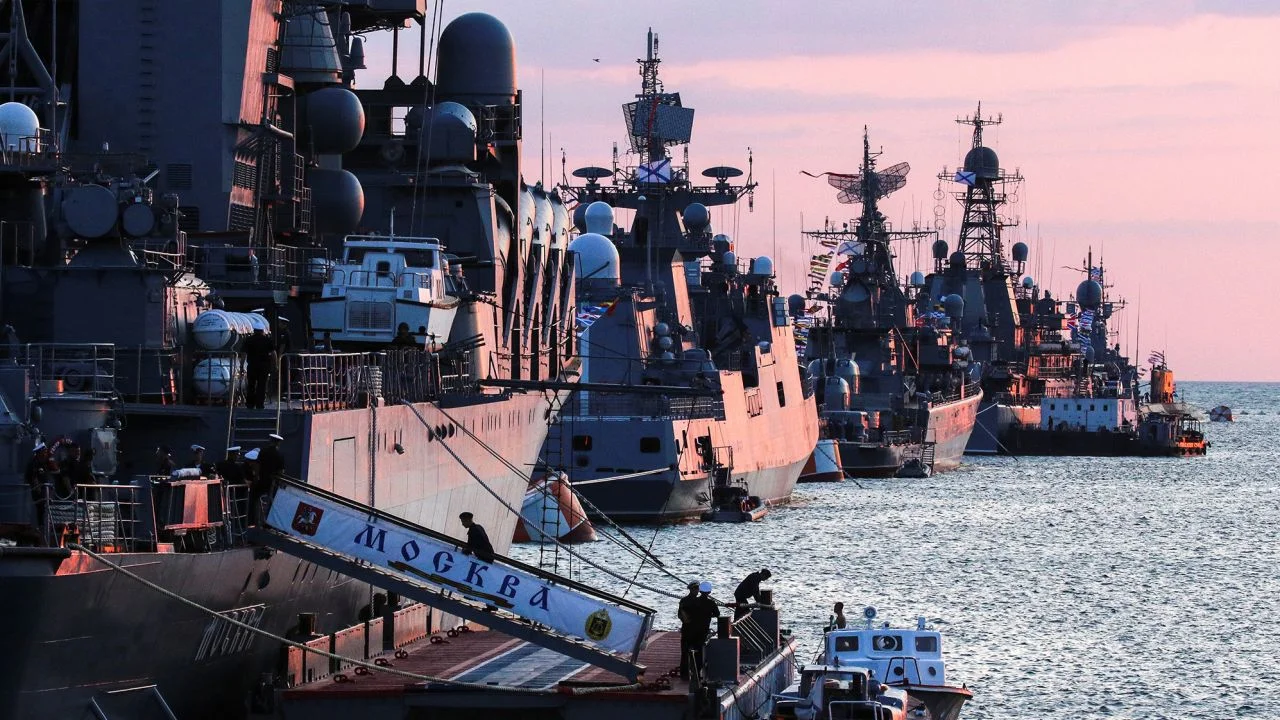In a recent escalation of tensions between Russia and Ukraine, a Russian naval vessel has reportedly suffered damage as a result of a drone attack carried out by the Ukrainian navy in the Black Sea. This incident, which occurred near the vital Russian port of Novorossiysk, has raised concerns about the evolving nature of naval warfare and its implications for the ongoing conflict.
According to Ukrainian sources, the assault targeted the Russian landing ship named Olenegorsky Gornyak. Ukrainian security service insiders have revealed that a sea drone, armed with a substantial 450kg (992lb) payload of dynamite, collided with the vessel, resulting in a serious breach. The incident took place just off the coast of Novorossiysk, a major hub for Russian exports and a strategic naval base for Moscow.
Russia’s defense ministry responded by stating that it had successfully repelled a Ukrainian attack on its naval base near Novorossiysk. The ministry confirmed the involvement of two sea drones but conspicuously omitted any acknowledgment of damage inflicted on Russian assets.
A video footage shared with the BBC by an undisclosed source within Ukraine’s security service showcases the dramatic moment of impact. The drone can be seen approaching the Olenegorsky Gornyak before the feed abruptly cuts off upon collision. An additional video, yet to be verified, suggests that the ship was listed to one side following the impact.
Sea drones, compact unmanned watercraft that operate both on and below the water’s surface, have increasingly become tools of choice in maritime conflict. These drones offer a level of flexibility and maneuverability that challenges traditional naval strategies, allowing smaller vessels to cause significant damage to larger, more heavily equipped ships.
The Olenegorsky Gornyak, the vessel targeted in this attack, plays a crucial role in Russia’s military operations. As a landing ship, it is designed to deploy amphibious forces for beachfront operations and quickly unload cargo at ports. The damage sustained by this vessel could potentially hinder Russia’s efforts to resupply its forces engaged in the ongoing conflict in occupied southern Ukraine.
The Novorossiysk port, the site of the attack, temporarily suspended ship movements in the wake of the incident. This information was provided by the Caspian Pipeline Consortium, which oversees the loading of oil onto tankers at the port.
This clash is not the first time Ukraine has attempted to strike the Novorossiysk port. The port’s economic significance, with approximately 1.8 million barrels of oil passing through daily, or roughly 2% of the global supply, makes it an attractive target. Additionally, the port holds strategic importance as a vital naval base for Russia.
The recent surge in conflicts at sea is further fueled by Russia’s decision to abandon a United Nations agreement that facilitated safe grain exports between Russia and Ukraine. Ukrainian ports have reportedly come under attack by Russian drones, prompting a swift response from Kyiv. President Zelensky of Ukraine has even issued a warning of the conflict potentially extending into Russian territory, while also expressing the possibility of a peace summit in the coming autumn.
These developments underscore the evolving dynamics of modern naval warfare, where advancements in drone technology are reshaping traditional strategies and tactics. As the conflict continues to unfold, the utilization of sea drones and their impact on naval operations could play a pivotal role in shaping the outcome of the ongoing Russia-Ukraine conflict.




